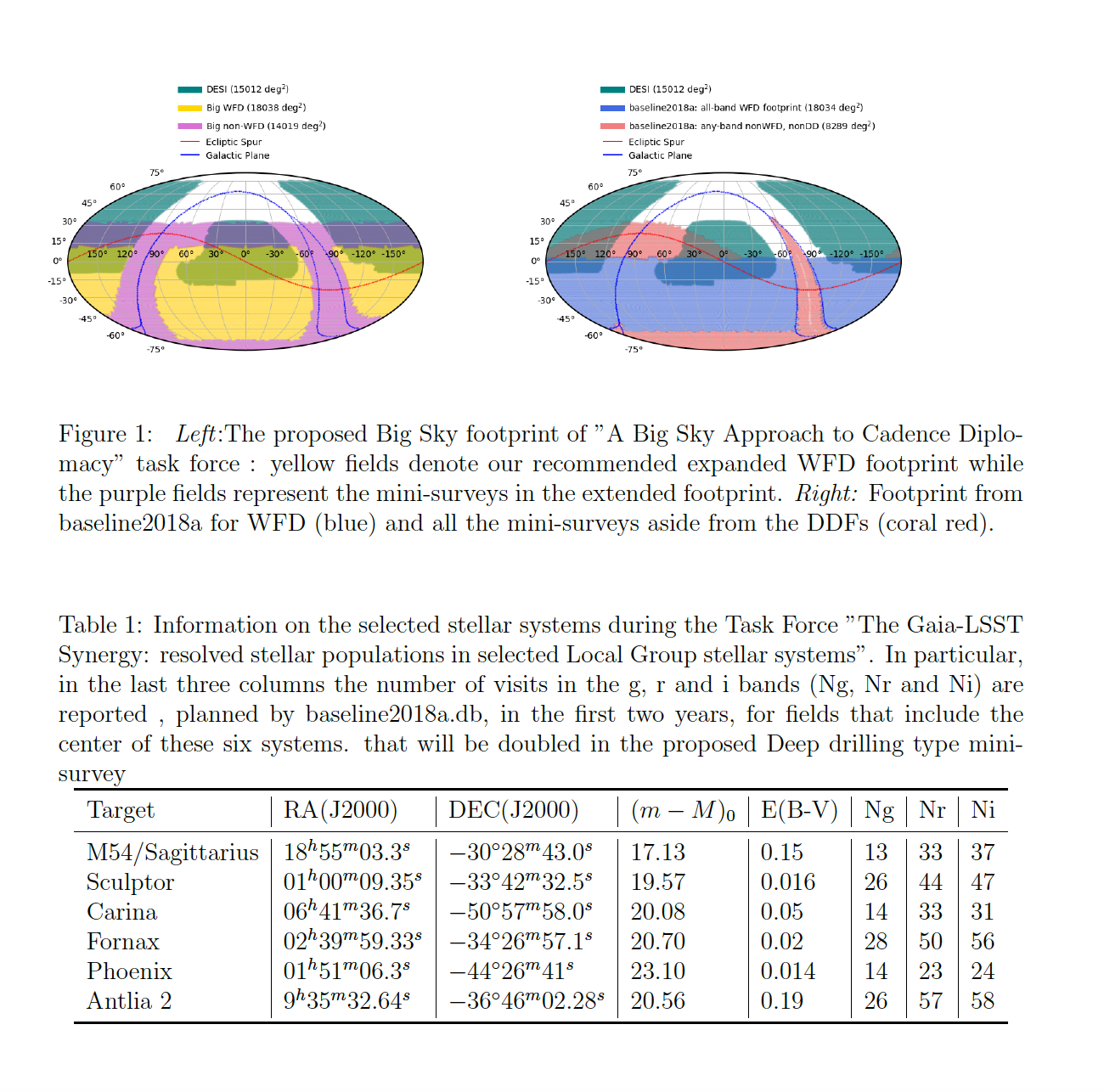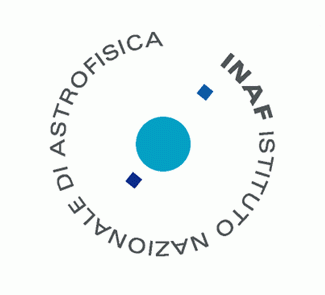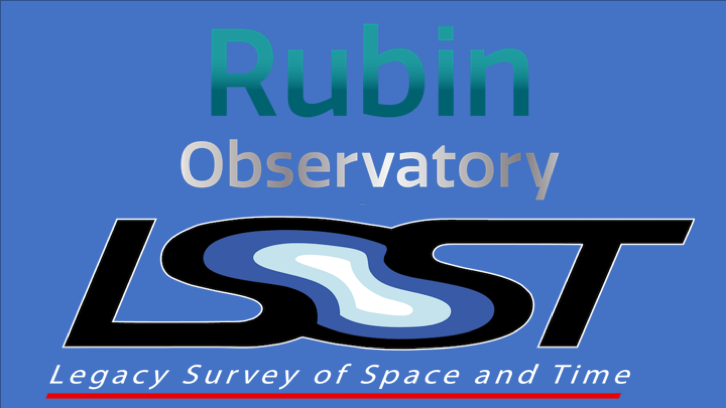Scientific Objectives
During this first year of activity we worked in synergy with two other working groups of LSST-Italia that deal with stellar variability: 1)The Gaia-LSST synergy: from pulsating stars and star formation history to WD planets (PI Clementini ) and 2)RR Lyrae, Cepheids and LBVs to constrain theory using LSST observations (PI Musella). This synergy was recently consolidated with the writing of a white paper for the LSST cadence called “The Gaia-LSST Synergy: resolved stellar populations in selected Local Group stellar systems” where we propose a combination of the Wide-Fast-Deep survey and a mini-survey (or alternatively a modified WFD with a rolling cadence that doubles the number of visits in the first two years), in order to study the stellar variability of in/around six Local Group stellar systems (see Table 1) of different morphological type that are located from 30 to 400 kpc in distance from us.
In particular Marcella Di Criscienzo, Ester Marini and Paolo Ventura have dealt with the selection of the fields around the selected fields (see Table 1) and the computation of the recovery fraction of RR Lyrae and Delta Scuti stars at the distance of that stellar system .
Furthermore, thanks to a collaboration born during the attended LSST hackaton@Flatiron Institute of New York Marcella Di Criscienzo participated, as a TVS representative, in a task force called “A big sky approach to cadence diplomcy” that had the purpose to find a new and original compromise between area, depht and temporal coverage of the main survey with the aim of alleviate many of the current concerns of Science Collaborations providing A paceful solutions to cadence war. For simplicity, we explored trades between the area of the LSST survey vs. the number of 30s visits per eld (and hence its depth), leaving aside the question of the temporal cadence. For this purpose we have developed a simple Python tool, LynneSim, to help evaluate the potential for these trades. This tool, available for all to use in the LSST Science Collaborations’ fork of the survey strategy white paper repository, is illustrated in example Jupyter notebooks here and here, and is scriptable. Our proposed solution dene a new survey by avoiding the Galactic plane (|b| > 15) while extending symmetrically north and south far enough to meet the LSST SRD requirement of 18,000 deg2, which results in a WFD footprint that covers -72.25 < Dec < +12.4 (see Figure 1). We have assigned 825 visits per eld to WFD, meeting the LSST SRD requirement of 825 median visits per eld, and distributed the remaining visits to the non-WFD Big Sky fields. These non-WFD fields then received 250 visits each, or 30% of the WFD visits, which is larger than the current baseline strategy for most parts of the sky. One of the benefits of this solution is the inclusion of Magellanic Clouds and their extended periphery in WFD survey increasing the discovery of its tidal debris, satellite debris and variable stars. In collaboration with Knut Olson and Paul Szkody we have proposed a combination of this modified WFD survey, a mini-survey of the South Celestial Pole and a Deep Drilling style survey to produce a 3-D map of the Magellanic System and to provide a detailed census of the transient and variable population in the Clouds. The details was written in the white paper called “Mapping the Periphery and Variability of the Magellanic Clouds” and attached at this document in which Marcella Di Criscienzo, Paolo Ventura and Francesco Borsa collaborated in defining the right strategy to be adopted on MC main body fields.
Concluding this group is in good health , despite having joined the LSST collaboration late. Their members have worked actively as documented by three submitted white papers and have recently started important collaborations. We will work, among other things, on the definition of further scientific cases (LPV, planets) that will included in LSST TVS RoadMap Document (whose Draft in still progress) and on the development of a new simulation tool for transient observations of planets.

Members
Principal Investigator:
Marcella Di Criscienzo, INAF-Osservatorio Astronomico di Roma
Co-Investigator:
Paolo Ventura INAF-Osservatorio Astronomico di Roma
Ennio Poretti INAF-Osservatorio Astronomico di Brera
LSST young researchers:
Roberto Silvotti INAF-Osservatorio Astrofisico di Torino
Paolo Ventura INAF-Osservatorio Astronomico di Roma
Ester Marini Università di Roma
Francesco Borsa INAF-Osservatorio Astronomico di Brera
LSST Affiliation
Stars, Milky Way and Local Volume
Transients and Variable Stars Science Collaboration
Activity Report

